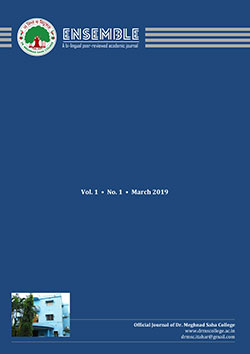The succeeding trends and disparity in Poverty reduction of Rural Bangladesh
Abstract
Bangladesh like other developing countries of the world has been striving to eradicate poverty after getting independence in 1971 and the country was considered as one of the poorest with about 70 percent poverty and only $200 per capita income in 1973-74. The present study analyses various data on poverty from the period 1971 to 2019 and finds that the country has reduced its poverty significantly to 10.5 percent in 2019 with more than $1909 per capita income. The poverty headcount ratio has decreased by more than 50% in the last 49 years. This study using National Households Income and Expenditure Survey (HIES) data of various years and also using other international organizations’ poverty-related data tries to explore the poverty scenario of Bangladesh from 1974 to 2019 and to examine some new aspects of regional poverty in Bangladesh. The country has a great achievement in the absolute poverty reduction during these periods, but these poverty reduction trends are somewhat relatively lower than some neighboring countries (e.g India, Nepal, Bhutan). In addition, though the absolute poverty rate has been reduced at the national level (10.5% in 2019), the present study finds a huge disparity in poverty reduction at the regional level in Bangladesh. Poverty rates are still more than double as compared to the state poverty rate in some districts of Bangladesh. This paper shows that the regional inequalities, income inequalities, old aged people, widows, uneducated and unskilled labor, various tribal groups, and various forms of poverty throughout the life cycle are revealing disparity of poverty in the rural area of Bangladesh.
Keywords: Poverty, Regional Poverty, Income inequality
https://doi.org/10.37948/ensemble-2021-0301-a011
Views: 842



